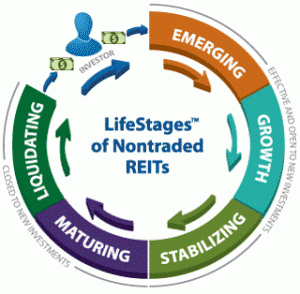Erik Conrad | InCommercial Property Group
The fog of conflicting economic data reminds me of an observation a colleague once shared with me – there is no difference between being demonstrably wrong and having bad timing.
The data released in early June of 2024 highlight the seemingly contrasting data from the Bureau of Labor Statistics (“BLS”) and the challenges facing the Federal Open Market Committee (The Federal Reserve’s rate-setting committee or “FOMC”). The noise, however, does not make the consequences of bad timing any less severe and the signals are increasingly pointing to the need for a policy shift sooner than later. Much like my colleague’s observation, the FOMC will either ease rates soon or aggressively cut rates rapidly later. So, let’s examine the signals and shine a light on a clearer portrait of the American economy.
If just one basic underpinning of the data is adjusted – total population figures – the incongruent data is corrected. Sounding the alarm for a policy path to ease rates and prevent a severe recession or ensuing deflationary cycle.
• June 7th, 2024, at 8:30 am ET the Bureau of Labor Statistics (“BLS”) reports the household and establishment survey results which point in opposite directions:
o The establishment survey (a survey of employers) suggests 272,000 jobs were added in May, well above consensus estimates.
o The household survey (a survey of households) reports 408,000 fewer jobs for the month with unemployment rising to 4.0%.
o Year over year job creation in the establishment survey: 2,756,000
o Year over year job creation in the household survey: 376,000
• June 12th, at 8:30 am ET, the BLS reports that May’s Consumer Price Index (“CPI”) was unchanged for the month, in other words, a 0.0% increase in the CPI for the month and 3.3% for the year.
• June 12th, at 2:00 pm ET, the Federal Reserve holds rates steady for June and revises guidance from two rate cuts to one for the remainder of the year.
• June 13th, at 8:30 am ET, the BLS reports that May’s Producer Price Index was down 0.2% in May and up 2.2% for the year.
Looking back over the past 24 months, headline CPI has decreased from a 9.1% annual rate to 3.3%, as measured year over year. The Federal Reserve’s explicit target is 2% as measured by the Personal Consumption Expenditure (“PCE”) which is structurally 0.5-1.0% lower than the CPI and currently reading 2.7%. The focus on the PCE, despite frequent media spin, is not because it is lower than the CPI, it’s because it’s a better measure of the impact of higher prices on consumers:
• CPI – Measures a basket of goods and tracks increases in prices of those goods over time
• PCE – Measures the expenditures of households on goods and therefore captures the changes in behavior that come from higher prices.
For example, brand-name eggs cost more so consumers buy a larger share of store-brand eggs as prices rise. Eggs are more expensive, and CPI captures that growth. Consumers choose the cheaper alternative more often, so in the aggregate, the growth in expenditures is lower.
I’ve written, posted, and lamented about much of this before:
• Getting CPI from 9.1% to 3.3% doesn’t require the same policy as 3.3% to 2.0% regardless of how you interpret the leading indicators. The decision not to ease into the correct rates with gradual adjustments will no doubt require more aggressive action in the future. The economy is often referred to as a cruise ship – I’ve never captained a cruise ship, but I know that you don’t wait till you hit the pier before easing off the throttle.
• The largest contributor of inflation continues to be shelter, in fact, the PCE excluding shelter has been below target on a year-over-year basis (even lower using shorter-term measures and projecting forward) for over nine months! Estimates of shelter costs are intrinsically flawed, delayed, and tend to bias upward during periods of higher rates because housing is so intrinsically tied to mortgage costs.
• There is no recorded period when the labor market softened by the Federal Reserve’s target of 0.5% without continuing to degrade by at least 2.0%. In other words, we doubt the forecast, because it has never been achieved (prior performance not being indicative of future results of course). The American job market has actually achieved that 0.5% increase in unemployment having moved from 3.5% to 4.0% and history suggests we are therefore on the precipice of a broader decline and recession.
These are not the only reasons why I’m convinced that rate cuts are coming and concerned about how far behind the curve the FOMC finds itself once again. The strength in the job market and the GDP figures are illusory, masking a building underlying issue that is apparent in other data.
Consumers and businesses alike feel negatively toward the economy in spite of strong jobs and GDP numbers. In response, there seems to be a steady feed of articles inventing explanations for why people feel poorly about the economy despite clear and convincing evidence that they are wrong. Maybe people know how they’re doing and feeling, and maybe, just maybe, they’re right and the data isn’t telling us an accurate story.
The only relevance to the number of jobs created each month is how it impacts households. The survey results stated above clearly indicate that the labor market, as it impacts households, is fairly negative. Approximately 100,000-200,000 jobs need to be created every month to keep up with the growth of the working-age population. Therefore, job creation above those numbers is worrisome when unemployment is already low.
The relationship of the job creation figures to the neutral rate is its only significance – if the neutral rate were 500,000, a number below that figure would be deflationary as more workers competed for fewer jobs and it would take a number over 500,000 to be inflationary. The monthly job creation figures are completely irrelevant without understanding what number is neutral.
What happens if we experience a period of extraordinary immigration, like say, right now? Currently, the Census Bureau (used in BLS calculations) immigration estimates stand at 1.1MM annually but the Congressional Budget Office (not used in BLS calculations), based on data collected at the border by Homeland Security, suggests the number is actually 3.3MM annually. Would some percentage of those extra 2.2MM people need to work and therefore the neutral rate of necessary job creation indeed be closer to 350,000 or 400,000 people rather than 150,000 people? Could those numbers easily explain a significant piece of the discrepancy between household and establishment surveys?
• Establishment Survey:
o Survey a representative sample of employers and then benchmark to the number of employers (i.e., survey 1% and then multiply by 100 to get the raw numbers).
• Household Survey:
o Survey a representative sample of households and then benchmark to the total households in the population (i.e., survey 1% of households and then multiply by 100 to get the raw numbers).
The two surveys are different, and on a month-to-month basis they don’t need to match but historically converge because they are trying to measure the same thing – employment. The surveys have been diverging for over two years (roughly the period of hyper-immigration that we have been experiencing post-COVID).
• Employers register with the IRS, so those numbers are presumably known
• The Census numbers appear demonstrably wrong for several years
The unemployment rate is likely correct (because it is a ratio that should be the same in the subset as the total), but the number of total jobs is structurally wrong if the population estimate is wrong.
The household survey is incorrect because it should be benchmarked to a larger population. There are more jobs than indicated but at the same time, it is accurate that people are feeling stressed and there aren’t enough jobs for people who want them. The unemployment rate is increasing, and workers are feeling the pressure.
It is troubling how easily the “strength” data points can be explained by this larger population, compared to what the BLS acknowledges. Even if recent data suggests a weakening consumer and slowing GDP, this should be viewed in the context of data that, before now, has been seen as surprisingly strong and resilient. But, again, this data is being expressed in raw size – i.e., the size of GDP is growing in nominal terms and the consumer is buying more than last year in nominal terms. The issue here is that every single person is incrementally accretive to these figures so a larger population on the scale of several million people each year easily tips the balance.
More people means a larger economy by default and more consumption by default, but growth in GDP below population growth is a signal of declining quality of life and deflationary. So, when that same data is being portrayed as its opposite, I get very concerned about the resultant policy response. Depressions were a relatively common occurrence before the modern-day Federal Reserve, and they have been largely attributed to the wrong policy response – bad medicine. I am explicitly not making a value judgment on policy or any people; this is only about the data giving us the wrong signal.
As the data converges, it points to a softening of inflation, demand, and the labor market. When the leading indicators point to further softening, if not outright decline, rate cuts should follow. If the FOMC continues to hold rates past the election or into next year, I fear it will be too late. The Federal Reserve’s dual mandate is full employment and price stability. The Federal Reserve’s dual mandate is full employment and price stability and while some signals for both price growth and labor market show limited strength, the direction for both is abundantly clear. The FOMC doesn’t need to change its measurements or data, but it can take in the signals, understand them, and react accordingly.
Both price stability and full employment are at risk in the current environment as deflationary forces have an opportunity to set in amidst a labor market that is rapidly softening. The economy operates best in a relatively small window. Inflation builds on itself and can spike (as we’ve all experienced) if it moves beyond a typical range. The labor market similarly degrades rapidly when the economy is pushed into a recession. Layoffs decrease demand rapidly, which in turn leads to more layoffs. Inflation may be bad, but deflation is worse. Everyone would like lower prices, but lower prices (deflation) are a doom loop for the economy as they further suppress consumer demand (waiting for even lower prices).
Declining prices pose significant problems for businesses that typically cannot cut wages and therefore lay off employees, creating a vicious cycle. Further, the FOMC policy prescription for inflation is relatively simple as there is no upper bound to the interest rate that can be set. However, the same cannot be said for a deflationary spiral, as rates cannot be set materially below the zero lower bound.
With an inflation target as low as 2% and the economy well on its way to that target (if not past it), the risk of tipping the economy into a deflationary spiral is becoming increasingly real.
I’ve always thought two hands and one lantern were sufficient to find the right policy, but we now have ample hands, multiple lanterns, and still can’t find the correct path – the rate cuts are coming, it’s just a question of whether it will be enough by the time they arrive.
ABOUT INCOMMERCIAL:
InCommercial is a full-service, end-to-end investment real estate portfolio manager with deep subject matter expertise. Through a 20-year history, its experienced team is dedicated to creating demonstrable value by leveraging their long-standing industry relationships to attempt to create value at each step of the investment cycle starting at acquisition and continuing through streamlined operations, accretive financing, and efficient exits.











